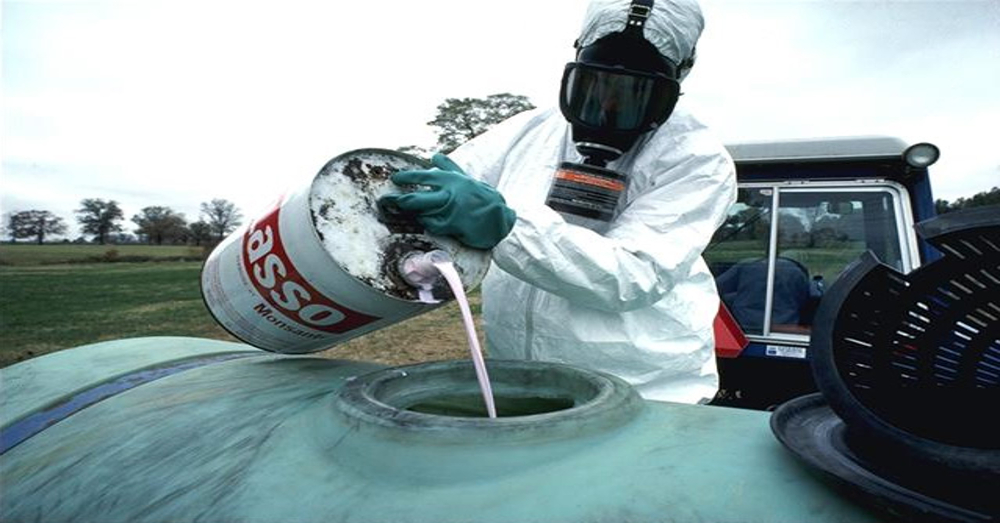
New Study: EPA’s ‘Safe’ Levels of this Chemical in Your Food Aren’t So Safe After All
May 16, 2018 | Katherine Paul
Organic Consumers Association
Last summer, the Organic Consumers Association (OCA) announced that our testing of Ben & Jerry’s popular ice cream flavors for glyphosate (the active ingredient in Monsanto’s Roundup weedkiller) turned up positive results in 10 of 11 samples we tested.
Our critics fired back that the glyphosate levels we found were “well below” the levels that the U.S. Environmental Protection Agency (EPA) tells us are “safe.”
In other words, relax! A little bit of Monsanto Roundup weedkiller in your ice cream is nothing to fret over.
Now a new pilot study, soon to be published in the prestigious scientific journal Environmental Health, suggests that EPA “safe” levels aren’t safe at all—especially for kids.
The Global Glyphosate Study pilot experimental phase, the first study of its kind, suggests that exposure to glyphosate at levels the EPA wants us to believe are “safe” can in fact lead to “certain important biological parameters, mainly relating to sexual development, genotoxicity and the alteration of the intestinal microbiome.”
We were especially intrigued by the study’s mention of how glyphosate alters the intestinal microbiome. OCA, along with Beyond Pesticides, is involved in a lawsuit against Monsanto for falsely for misleading consumers who buy Roundup for their lawns about the product’s safety. Monsanto tried to get the lawsuit dismissed, but a federal judge recently ruled in favor of allowing the lawsuit to proceed.
This new study follows on the heels of last week’s news that when glyphosate is combined with other chemicals to create the final weedkiller formulation, the herbicide is more toxic to human cells than glyphosate alone.
Will this new evidence lead to a ban on glyphosate? Hard to tell, given what we know about possible collusion in the past between Monsanto and the EPA to keep consumers in the dark about how toxic Roundup and glyphosate are to human health. Plus we’re now dealing with an EPA that favors hiding the truth about toxic chemicals from the public, over protecting the chemical industry’s image.
Why this study is different
There have been many studies conducted on the potential health hazards of glyphosate, including the Seralini study which linked glyphosate to cancer in rats.
But until now, there have been no long-term, peer-reviewed studies of the potential health impact of glyphosate exposure at levels lower than the EPA’s guidelines.
Why is that critical? Because it tells us that the EPA set its “allowable safe limits” without having any scientific evidence to back up the “safety” claim—because glyphosate had never been tested for potential human health effects at levels below those so-called safe limits.
The Ramazzini Institute’s Global Glyphosate Pilot, which is the first phase of a longer study to come, differs from previous studies in that it is the only comprehensive study of glyphosate. Previous studies have looked at toxicity, and omics (genomics, proteomics or metabolomics). But the Ramazzini multi-generational study covers toxicity, carcinogenicity, neurotoxicity, prenatal developmental toxicity, endocrine disruption, and impact on the microbiome.
No other glyphosate studies have incorporated all of those elements.
Why is this study critical for consumers?
Glyphosate contamination is widespread in the U.S. It’s in many foods, even those labeled “natural,” including foods we feed our kids.
As long as the EPA sticks to its claim that there are “safe” levels of glyphosate contamination, nothing will change. If we want glyphosate banned, we need a comprehensive, long-term study of glyphosate’s adverse effect on human health, even at low levels.
According to the Ramazzini Institute, there are still “many large gaps in our knowledge regarding the health effects of glyphosate and glyphosate-based herbicides, especially at real-life exposure levels of the chemical. The main reasons for these gaps in our knowledge are, according to the Global Glyphosate website, are:
• Independent scientists have never had the funding available to create and carry out a comprehensive study
• Glyphosate industry safety studies on glyphosate have never concentrated on real-life exposure levels of the chemical
• Glyphosate industry safety studies on glyphosate are often ‘commercially confidential’ and kept hidden from the public and independent scientists, so cannot be independently evaluated
• Independent researchers have never before been able to call on the expert advice of a wide range of scientific experts during the creation of the protocol for the study
Can the scientists at the Ramazzini Institute fill in these gaps? The Institute has an impressive history of exposing the dangers—and reducing allowed limits—of multiple chemicals, including vinyl chloride, benzene and formaldehyde.
On glyphosate, the Institute claims that is “one of the only independent scientific bodies in the world that has the ability to create and carry out a comprehensive long-term study that will have the backing of a large number of global scientific experts as well as the general public.”
Monsanto wasted no time in attacking the pilot study, and will no doubt ramp up a well-funded campaign to discredit the Ramazzini scientists—just as it did when the World Health Organization’s International Agency for Research Cancer classified glyphosate as a “probable human carcinogen.”
But the chemical giant will have to work extra hard to discredit this study because the Ramazzini Institute has built up a network of authoritative partners which includes the University of Bologna (Faculty of Agriculture, Veterinary Science and Biostatistics), the Genoa Hospital San Martino, the Italian National Institute of Health, the Icahn School of Medicine at Mount Sinai in New York and the George Washington University. That means Monsanto’s attack dogs won’t be able to focus exclusively on one institution, especially when talking to regulators and the media.
For now, at least, this new study is our best hope for ridding the world of glyphosate, once and for all.
Katherine Paul is associate director of the Organic Consumers Association. To keep up with OCA’s news and alerts, sign up here.
